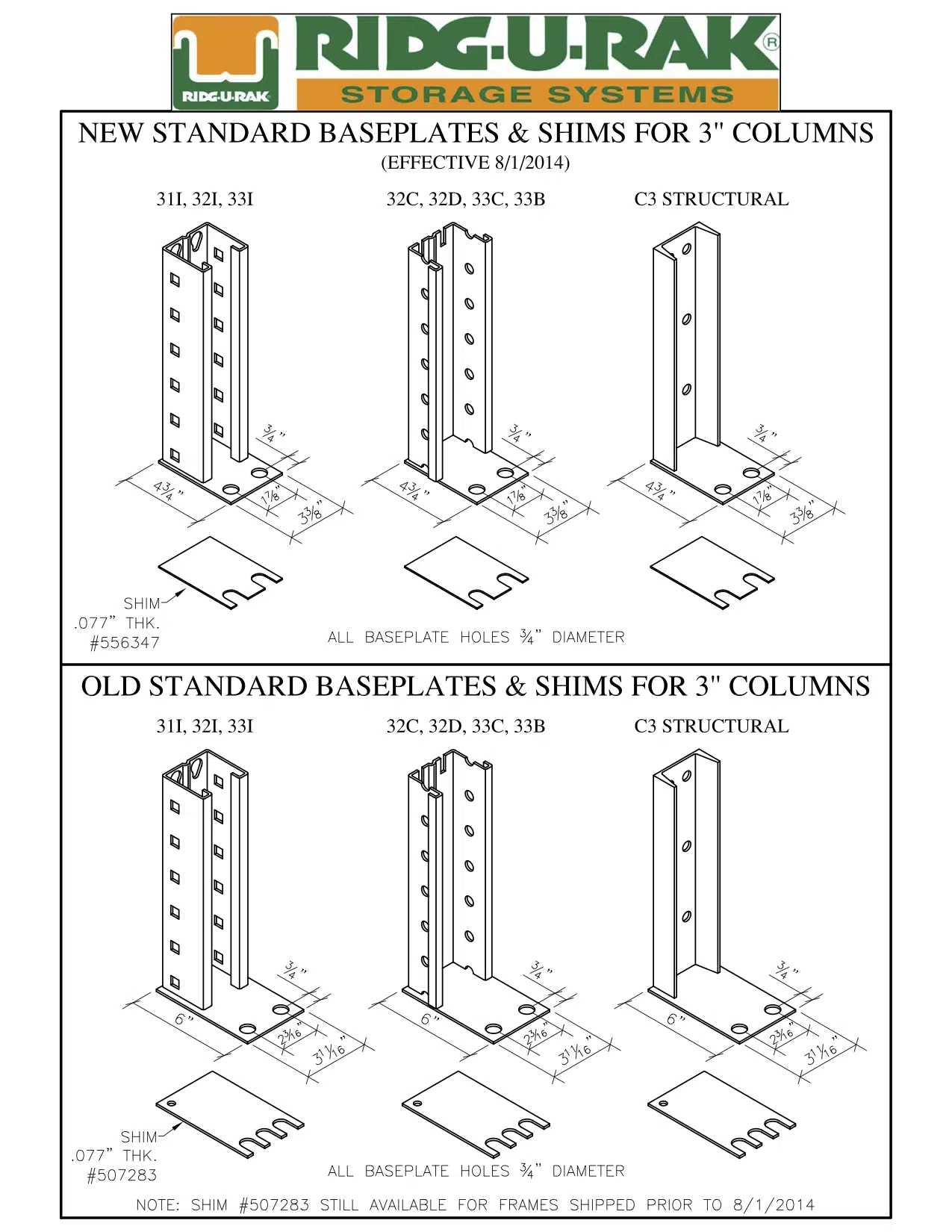Pallet Rack Baseplate Basics
This week’s installment of Rack Art features pallet rack baseplates. Baseplates are like big toes. They’re small in comparison to the rest of the “body” of the upright frame, and often go unnoticed. Because of their inconspicuous location and relatively small size, they can be taken for granted. However, like big toes, it’s hard to achieve complete balance and stability without them. The purpose of this week’s Rack Art post is to brush up on the basics of baseplates, and give a little credit to an important, but often overlooked component of the upright frame.
What is a Pallet Rack Baseplate?
Baseplates, also known as “footplates,” are a rectangular metal plate based at the foot of an upright frame. Because the upright frame column is typically only 1-3 inches wide on either side, the footplate provides additional surface area and stability at the foot of the upright frame. Unless pallet racking is under eight feet tall and is being used for hand-stacking only, baseplates should always be anchored to the floor. This is an essential aspect of responsible and safe pallet rack usage, and prevents racking from being tipped in either direction from the impacts that occur during loading or unloading. It’s also important to note that anchoring is required to comply with ANSI and RMI specifications. Footplates typically feature two holes towards the front of the plate, which are meant to be used as anchor holes. Counterintuitively, only one of these holes should actually be used for anchoring. The second hole is intended to function more as a spare than as a primary anchor hole, and deliberately using both anchor holes can result in a weakening of the flooring into which they’re drilled. Shims, which are metal plates that fit underneath the footplates and are made to the same dimensions, should be utilized when uprights are used on uneven flooring.
Are All Baseplates the Same Size?
Not all pallet rack baseplates are equal in terms of dimensions.. The dimensions of baseplates can change from one manufacturer to another, and manufacturers themselves may shift the dimensions of their baseplates. Ridg-U-Rak upright frames, for example, now feature a smaller footplate than what was previously used (now 3 3/8” x 4 3/4” instead of 3 1/16” x 6”). While any size of footplate provided by the manufacturer will afford the needed surface area and stability, footplate size is an important factor to consider when adding shims.


